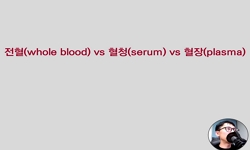Purpose: This study aimed to evaluate the potential allergenicity of genetically modified (GM) herbicide-resistant food by using the serum screenning test. Methods: Children with allergic disease were recruited, and those who were sensitized to soybea...
http://chineseinput.net/에서 pinyin(병음)방식으로 중국어를 변환할 수 있습니다.
변환된 중국어를 복사하여 사용하시면 됩니다.
- 中文 을 입력하시려면 zhongwen을 입력하시고 space를누르시면됩니다.
- 北京 을 입력하시려면 beijing을 입력하시고 space를 누르시면 됩니다.

혈청을 이용한 제초제내성 유전자재조합식품의 알레르기성 평가 = Assessment of Allergenicity in Genetically Modified Herbicide-Resistant Foods Using the Serum Screening Test
한글로보기https://www.riss.kr/link?id=A76621258
- 저자
- 발행기관
- 학술지명
- 권호사항
-
발행연도
2009
-
작성언어
-
- 주제어
-
KDC
500
-
등재정보
KCI등재,ESCI
-
자료형태
학술저널
-
수록면
250-259(10쪽)
- 제공처
-
0
상세조회 -
0
다운로드
부가정보
다국어 초록 (Multilingual Abstract)
Purpose: This study aimed to evaluate the potential allergenicity of genetically modified (GM) herbicide-resistant food by using the serum screenning test. Methods: Children with allergic disease were recruited, and those who were sensitized to soybean, corn or peanut were selected to obtain their sera. Sensitization to these food allergens was determined when the level of specific IgE was over 0.35 kU/L using ImmunoCAP (Pharmacia, Uppsala, Sweden). Immunoblot analyses were performed for soybean (n=50), corn (n=50) and peanut (n=20). Newly inserted gene was sequenced and cloned from GM soy (Roundup Ready Soybean, Monsanto), GM corn (Bt 11, Syngenta) and GM canola (MS8/RF3 canola, Bayer CropScience). These proteins, such as CP4 EPSPS, PAT, and BAR, were expressed and purified for the serum screening test. Results: Immunoblot analysis using CP4 EPSPS and sera from soybean-sensitized children showed no bands. Likewise, sera from corn-sensitized children and PAT did not demonstrate IgE binding in immunoblot analysis. In addition, there were no reactions between BAR and sera from peanut-sensitized patients. Conclusion: The serum screening test using sera from allergic children and newly inserted protein (CP4 EPSPS, PAT and BAR) in GM soybean, GM corn and GM canola failed to show IgE binding in immunoblot analysis. The results of this study suggest that these newly inserted proteins may not cause allergic disease. Further studies using more sera from allergic children are needed to conclude the safety of herbicide-resistant GM food. [Pediatr Allergy Respir Dis(Korea) 2009;19:250-259]
동일학술지(권/호) 다른 논문
-
마이코플라스마 폐렴에서 혈청 항체가와 임상 양상과의 관련성
- 대한소아알레르기호흡기학회
- 김지영 ( Ji Young Kim )
- 2009
- KCI등재,ESCI
-
- 대한소아알레르기호흡기학회
- 한영미 ( Young Mi Han )
- 2009
- KCI등재,ESCI
-
소아 대,소엽성 폐렴의 임상 양상 및 원인에 대한 고찰
- 대한소아알레르기호흡기학회
- 이윤희 ( Yoon Hee Lee )
- 2009
- KCI등재,ESCI
-
- 대한소아알레르기호흡기학회
- 안연화 ( Yeon Hwa Ahn )
- 2009
- KCI등재,ESCI




 KCI
KCI KISS
KISS


